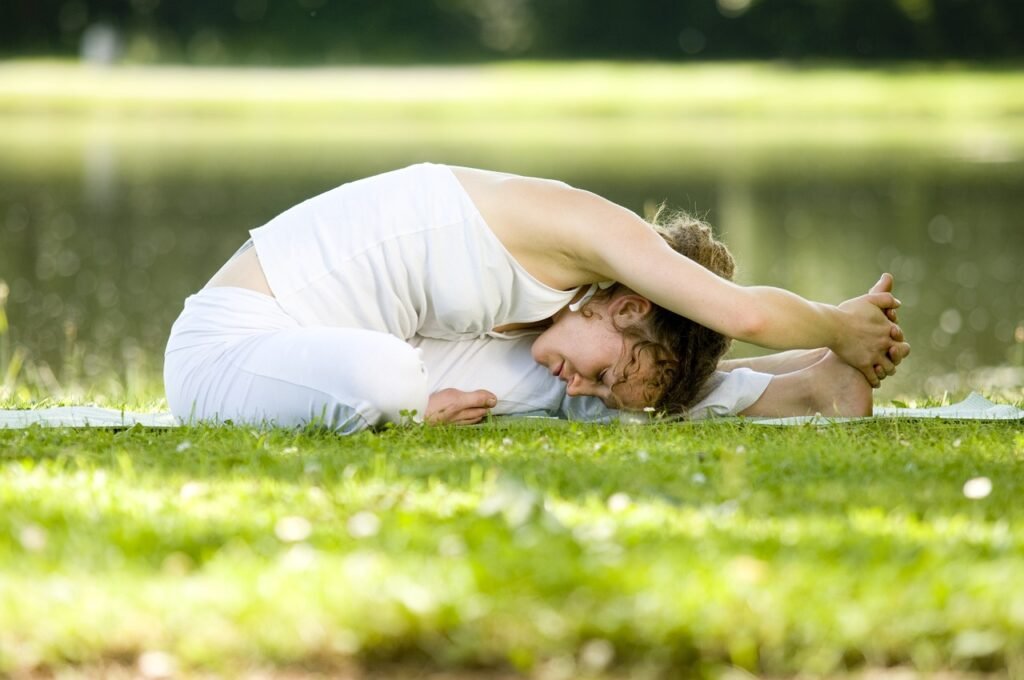Have you ever felt like your yoga practice has hit a plateau? Maybe you’re searching for ways to deepen your experience or to learn some new techniques? There’s always something new to learn in yoga, and with the right tips, you can elevate your practice and find renewed joy on the mat.

Understanding the Core Principles of Yoga
Before we move on to specific tips, it’s crucial to grasp the core principles of yoga. Yoga isn’t just about physical postures; it’s a holistic practice that encompasses the body, mind, and spirit. Recognizing this interconnectedness can profoundly enhance your experience.
The Eight Limbs of Yoga
The ancient sage Patanjali outlined a path in yoga consisting of eight limbs. Understanding these can help guide your practice.
| Limb | Description |
|---|---|
| Yama | Ethical standards and discipline in your relationship with others. |
| Niyama | Personal observances, including self-care and reflection. |
| Asana | The physical practice of yoga postures. |
| Pranayama | Breath control techniques that influence energy. |
| Pratyahara | Withdrawal of the senses to move inward. |
| Dharana | Concentration and focused attention. |
| Dhyana | A deep, meditative state of awareness. |
| Samadhi | A state of bliss or union with the divine. |
By familiarizing yourself with these eight limbs, you can apply their principles to bring greater depth to your mat time.
Cultivating the Right Mindset
Your mindset plays a pivotal role in how you approach your practice. Entering each session with an open heart and positive attitude can transform your experience. Try setting a heartfelt intention before you begin. It can range from wanting to feel more grounded to seeking self-love.
Setting Up Your Practice Space
Creating a dedicated space for your practice can significantly enhance the quality of your sessions. It doesn’t have to be elaborate; simply establishing a spot that feels serene can transform your experience.
Choosing the Right Environment
Select a peaceful location in your home with minimal distractions. Natural light can uplift your mood, while soothing colors can help calm your mind. If you enjoy the sound of nature, consider a space near a window.
Personalizing Your Space
Personal touches can make your space uniquely yours. Consider using:
- Essential oils: Scents like lavender or eucalyptus can enhance relaxation.
- Candles or incense: These can help create a calming atmosphere.
- Comfortable props: A good yoga mat, blocks, and cushions can foster a better experience.
Building a Consistent Practice Routine
Establishing a consistent routine can enhance your experience and deepen your skills. Consistency is key in yoga, and crafting a schedule can help you stay committed.
Finding Your Ideal Frequency
Determine how often you want to practice. It could be daily, a few times a week, or once a week. Choose something you can realistically maintain without feeling overwhelmed.
Utilizing a Scheduling System
Consider keeping a journal or calendar where you can mark your practice days. Tracking your progress can keep you motivated and help you observe improvements over time.
Incorporating Breathwork into Your Practice
Breath control, or pranayama, is a significant aspect of yoga that is often overlooked. Learning to manipulate your breath can influence your mood and energy levels, ultimately enhancing your practice.
Basic Breath Techniques
Here are a few simple techniques to get you started:
| Technique | Description |
|---|---|
| Ujjayi Breath | Also known as “victorious breath,” it involves creating a slight constriction in the back of your throat, producing a soothing sound. |
| Nadi Shodhana | An alternate nostril breathing technique that helps balance the mind and body. |
| Kapalabhati | A breathing technique that involves short, sharp exhales, followed by passive inhales, stimulating energy. |
Experiment with these techniques at the beginning or end of your practice to notice how they affect your state of mind.

Exploring Different Yoga Styles
With so many styles of yoga available, it can be incredibly beneficial to explore various types to find what resonates with you. Each style offers a distinct approach, allowing you to experience yoga in diverse ways.
Common Styles of Yoga
Here’s a brief overview of several popular yoga styles:
| Style | Description |
|---|---|
| Hatha Yoga | Focuses on physical postures and is great for beginners, emphasizing basic alignment. |
| Vinyasa | Involves flowing sequences that link breath with movement, often accompanied by music. |
| Ashtanga | A rigorous style with a set sequence of postures, perfect for those who enjoy a challenge. |
| Iyengar | Emphasizes precision and alignment through the use of props to help perfect poses. |
| Restorative | A gentle style that uses props to support the body in restful positions for deep relaxation. |
Experimenting with different styles can keep your practice fresh and exciting, inviting new energy and insights.
Listening to Your Body
One of the most important skills in yoga is learning to listen to your body. While it’s fantastic to challenge yourself, it’s equally vital to honor your limitations and be kind to yourself.
Recognizing Your Limits
Pay attention to physical signals such as pain or discomfort. Acknowledge when something doesn’t feel right and make adjustments accordingly. Remember, yoga is not about competition; it’s a journey of self-discovery.
Modifying Poses
If a specific pose doesn’t feel accessible, don’t hesitate to modify it or take a break. For example:
- Use blocks or straps to ease into poses.
- Explore variations of poses that might be more comfortable for your body type.

Seeking Guidance
While you can certainly practice yoga independently, getting guidance from experienced instructors can be immensely beneficial. They can help amp up your practice and introduce you to new techniques you may not discover on your own.
Finding a Qualified Instructor
When looking for an instructor, make sure to check their credentials and experience. Many yoga studios offer free trial classes or beginner sessions, which can be a good way to see if a teacher’s style resonates with you.
Online Resources
If you’re more comfortable practicing at home, plenty of online platforms offer classes and tutorials. Websites and apps often feature a variety of styles and difficulty levels to suit your needs.
Embracing Mindfulness and Meditation
Incorporating mindfulness and meditation into your practice can deepen your experience and create a sense of calm both on and off the mat. It allows you to connect with your inner self and promotes an overall sense of well-being.
Simple Mindfulness Practices
Begin with small mindfulness exercises, such as:
- Practicing gratitude at the start or end of each session.
- Focusing on the sensations in your body during poses.
- Engaging in short meditation sessions to cultivate a calm mind.
Meditation Techniques
Consider introducing these meditation practices into your routine:
| Technique | Description |
|---|---|
| Guided Meditation | Follow a recorded meditation that takes you through a relaxed journey. |
| Body Scan | Focus on different parts of your body, bringing awareness and relaxation. |
| Mantra Meditation | Repeating a calming word or phrase to help focus your mind. |
Integrating mindfulness and meditation can lead to profound insights and a heightened sense of peace.

Combining Yoga with Other Practices
Don’t hesitate to blend your yoga practice with other forms of exercise or wellness routines. A well-rounded approach benefits both your body and mind.
Strength Training
Incorporating strength training can help build muscle and improve your overall physique, enhancing your yoga practice. Aim for a balanced routine that includes strength exercises two to three times a week.
Cardiovascular Exercise
Activities such as running, cycling, or swimming can improve cardiovascular health, stamina, and speed. Including these practices can complement your yoga by enhancing physical endurance.
Maintaining a Balanced Diet
Nutrition plays an essential role in your yoga journey. Eating well can improve energy levels and support your overall performance on the mat.
Focusing on Whole Foods
Aim to consume a diet rich in whole, unprocessed foods. This not only provides essential nutrients but also supports your body during practice. Try including:
- Fruits and vegetables: These are rich in vitamins and minerals.
- Whole grains: Such as quinoa or brown rice for sustained energy.
- Healthy fats: Like avocados and nuts for brain health and satiety.
Staying Hydrated
Hydration is vital! Always drink plenty of water before, during, and after your practice. Proper hydration helps with muscle function and energy levels, enhancing your overall experience.

Progressing Your Practice
As you deepen your yoga practice, you might start feeling the urge to take on more challenging poses or sequences. Here’s how to safely progress:
Setting Goals
Identify specific goals you’d like to achieve, whether it’s mastering a new pose, increasing flexibility, or enhancing your breath control. Write them down and track your progress over time.
Gradual Challenges
Gradually introduce more advanced poses into your routine. Test your limits, but listen to your body and back off if you feel overly strained.
Connecting with the Yoga Community
Finding a supportive yoga community can enrich your experience and provide motivation. Sharing your journey with others can enhance your practice and foster deep connections.
Joining Classes or Groups
Participate in local classes, workshops, or yoga retreats to meet fellow practitioners. Engaging with a community can provide encouragement and inspiration.
Utilizing Social Media
Consider following yoga communities on social media. Sharing your journey and seeing others’ practices can motivate you on days when you might feel uninspired.
Incorporating Yoga into Daily Life
Your practice doesn’t have to be confined to your mat. You can integrate yoga principles and movements into your daily routine.
Simple Stretches Throughout the Day
Practice gentle stretches during breaks or at home, such as:
- Neck rolls to release tension.
- Seated forward bends to relieve stress.
- Cat-Cow stretches if you’ve been sitting for too long.
Mindfulness in Daily Activities
Incorporate mindfulness by focusing on the sensations while eating or walking. Engaging fully in these activities can elevate your everyday experience.
Conclusion: Your Journey of Growth
As you begin integrating these tips into your routine, remember that your yoga journey is uniquely yours. There’s no right or wrong way to practice; it’s all about discovering what feels best for you. Embrace the journey, stay curious, and keep enjoying every moment on your mat. Through dedication and an open heart, you will undoubtedly transform your yoga practice for the better.




